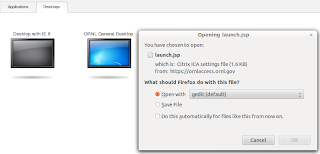I successfully installed CyanogenMod Android on my old HP Touchpad recently and the relevant notes are below. Delighted to have a fully functioning tablet after watching it collect dust for years.
- Install Novocom first. This is needed for the next step.
- Install Touchpad Toolkit by JC Sullins. The relevant file is
TPToolbox-2015-01-08-v42.zip which contains files for Windows, Mac and Linux.
tptb_v42_mac.command/tptb_v42_nix.sh/tptb_v42_win.bat/TPToolbox-2015-01-08-v42.bin
I used tptb_v42_mac.command on my Mac to facilitate the installation.
- Three critical files are necessary for a working Android OS
- ROM, gApps and Recovery.
- ROM is the actual Android operating system. There seem to be hundreds of streams of ROMs each of which has nightly builds and regular version releases. LolliPop, KitKat, CyanogenMod etc.
- Since Android is (for some reason) tied to Google, gApps (Google Apps) is needed. Again there are gApps from various developers. There is no guarantee that a particular version of gApps will work smoothly or otherwise with any random version of ROM.
- Recovery, to me, sounds like swap space. Again hundreds of varieties exist. No guarantees on compatibilities with gApps versions or ROM versions.
- So while you have 3 buckets with red, green and blue balls, you cannot pull out a random ball (each different size) and expect them to just work.
Below are the results of 4 attempts the last of which is fully functional. The notes explain what was lacking in the unsuccessful installs.
Working: battery
Not working: No camera and buggy wifi (restarting wifi results in reboot):
-------------------------
gapps-lp-20150222-signed.zip
pac_tenderloin_LP.Beta-1.Unofficial_20150419-075314.zip
update-PhilZ_CWM-jcs-dm-tenderloin-20140612.zip
Working: camera works and wifi is clean
Not working: Battery does not charge (System says: Not charging AC)
------------------------
ev_tenderloin-5.1.1-testing-2015.05.13.zip
tk_gapps-modular-nano-5.1.1-20150613-signed.zip
update-PhilZ_CWM-jcs-dm-tenderloin-20140612.zip
Working: battery and wifi (not buggy)
Not working: No camera and random reboots.
------------------------
Slim_mini_gapps.BETA.5.1.build.0.x-20150612.zip
pac_tenderloin_LP-MR1.Beta-1.Unofficial_20150516-161123.zip
update-CWM-jcs-dm-tenderloin-20141231-2.zip
Fully functional - from June 12, 2015 version from JCSullins
------------------------
cm-11-20150612-SNAPSHOT-jcsullins-tenderloin.zip
gapps-kk-20140606-signed.zip
update-PhilZ_CWM-jcs-dm-tenderloin-20140612.zip
Various resources helped me in the process and below is a list of some of those links:
1. http://liliputing.com/2014/06/use-touchpad-toolbox-install-android-erase-webos-hp-touchpad.html
2. https://www.youtube.com/watch?v=bIc18AcuoW4
3. http://rootzwiki.com/topic/31548-rom-guide-how-to-install-android-23-43-on-the-hp-touchpad-the-easy-way/
Enjoy!





















